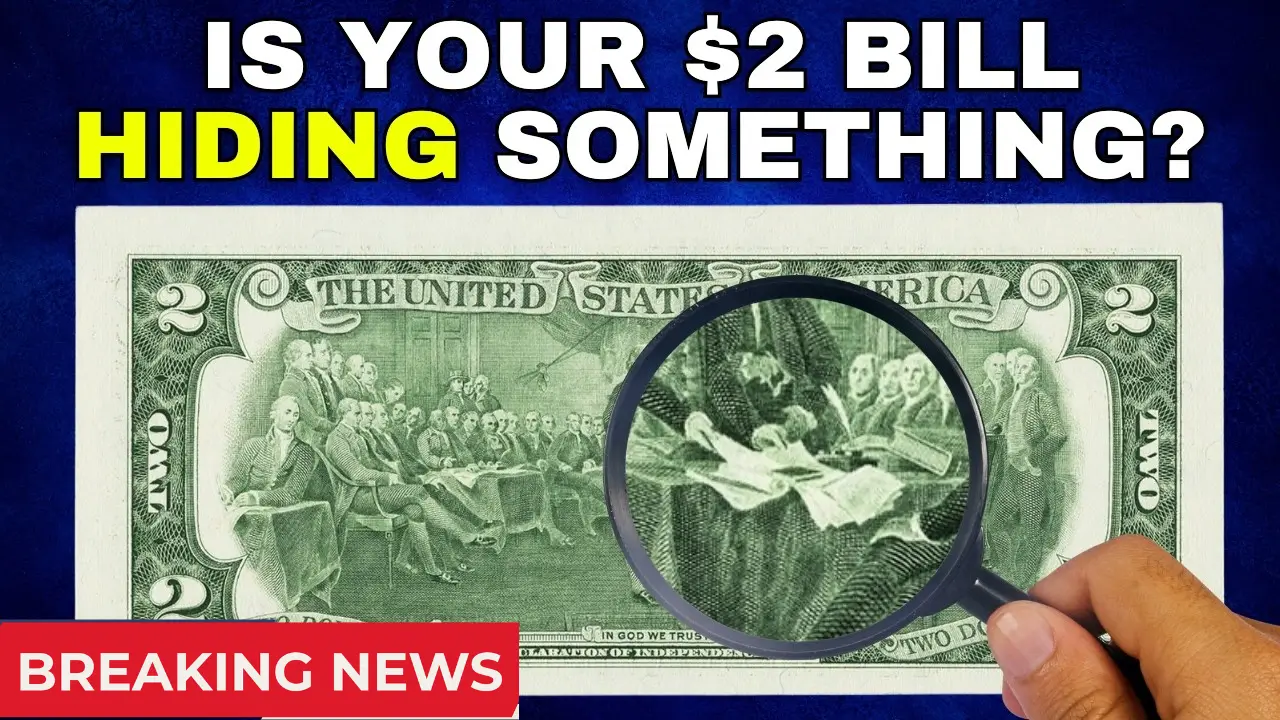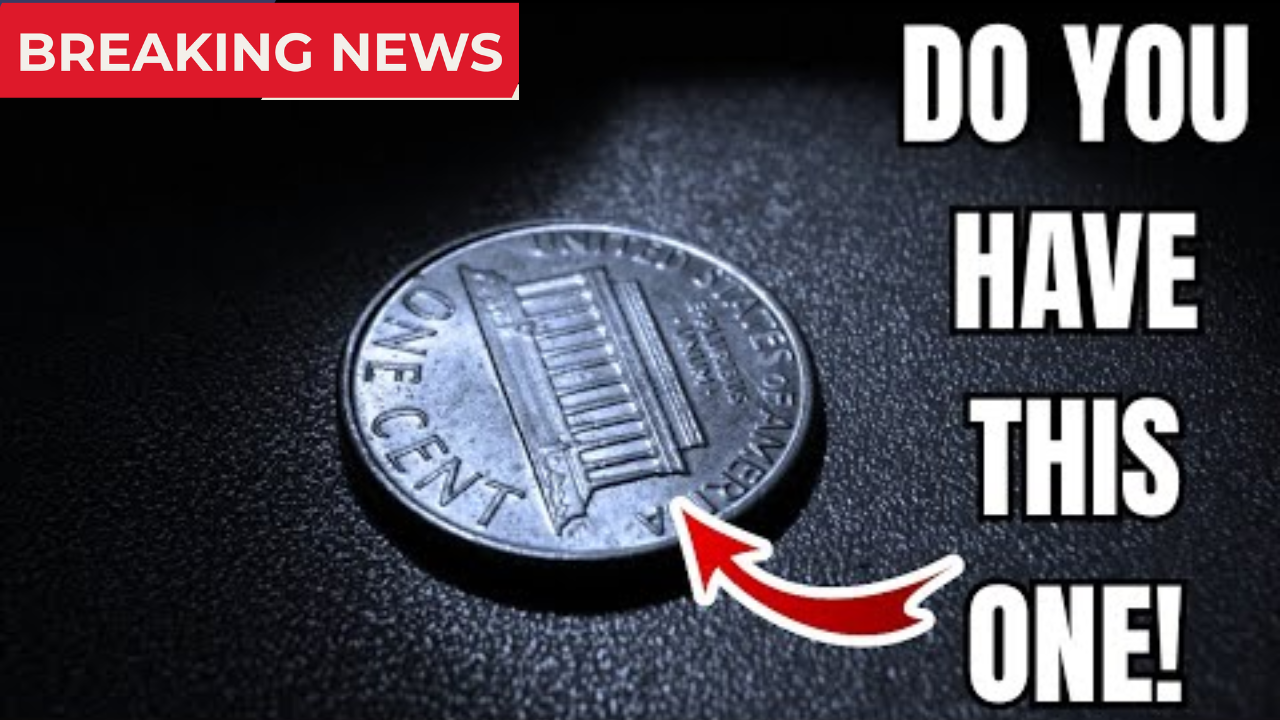A simple stop at a gas station can sometimes lead to a life-changing discovery. This is exactly what happened to a customer in Texas, who received a $2 bill as change after paying for gas. At first, the bill looked like any other, but its older appearance and near-perfect condition caught the customer’s eye. Curious, the customer decided to show the bill to a currency expert. What followed was a shocking revelation—the $2 bill was not ordinary, but an extremely rare piece of American history, valued at a staggering $2.612 million.
Stories like this capture the imagination because they show how everyday moments can hide incredible treasures. Most people use cash without a second thought, but sometimes, the money in your wallet could be worth far more than its face value. The rare $2 bill found at the gas station is a perfect example, showing that valuable items can be hidden in plain sight. This article explores the story behind the rare $2 bill, why it is so valuable, and what makes certain $2 bills worth more than others.
Gas Station Treasure 2025
The discovery of the rare $2 bill at a gas station has become a sensation among collectors and the general public. The bill, known as a “Grand Watermelon” note, is one of the most sought-after pieces in American currency collecting. Its nickname comes from the large green zeros on the back, which resemble watermelons. Only a few of these notes exist today, making them extremely valuable.
Overview Table
| Feature | Details |
|---|---|
| Location Found | Texas gas station |
| Bill Type | $2 Treasury Note |
| Year of Issue | 1890 |
| Nickname | Grand Watermelon |
| Unique Feature | Large green zeros on the back |
| Condition | Near-perfect, uncirculated |
| Serial Number | Unique, low number |
| Auction Value | $2.612 million |
| Number Remaining | Only a few in existence |
| Collector Interest | Extremely high |
The Story Behind the Rare $2 Bill
A Simple Transaction, A Huge Surprise
The story began like any other day. A customer stopped at a gas station in Texas, paid for gas, and received a $2 bill as change. The bill looked old and was in excellent condition. Instead of spending it, the customer showed it to a currency expert, who quickly realized it was a rare find—a genuine 1890 $2 Treasury Note, part of the famous Grand Watermelon series.
Why Is This $2 Bill So Valuable?
Several factors make this $2 bill worth millions:
- Rarity: Most Grand Watermelon notes were destroyed long ago. Only a few remain today, making them highly sought after by collectors.
- Condition: The bill found was in near-perfect condition, which is very rare for notes this old.
- Unique Serial Number: Collectors value bills with unique or low serial numbers, and this bill had one.
- Historical Significance: The Grand Watermelon series is famous in American currency history, adding to its value.
What Makes $2 Bills Valuable?
Not every $2 bill is worth a fortune. Here are the main factors that can make a $2 bill valuable:
- Series Year: Bills from the 1800s or early 1900s, especially the 1890 Grand Watermelon or the 1928B red seal series, are much more valuable than modern ones.
- Seal Color: Older $2 bills may have red or brown seals, while newer ones have green seals. Red and brown seals are more valuable.
- Condition: Uncirculated bills (no folds, creases, or marks) are worth much more than worn ones.
- Serial Number: Bills with unique serial numbers, such as those with many zeros or repeating numbers, are highly prized.
- Printing Errors: Bills with printing mistakes can be worth more to collectors.
- Limited-Run Notes: Some $2 bills were printed in small quantities, making them rare.
The Grand Watermelon Note: A Collector’s Dream
The Grand Watermelon note is one of the most famous and valuable pieces of American currency. Its nickname comes from the large green zeros on the back, which look like watermelons. These notes were issued in 1890 and are part of the $2 Treasury Note series. Because so few were made and even fewer have survived, they are considered the “holy grail” for currency collectors.
Key Facts
- Only a handful of Grand Watermelon notes are known to exist today.
- The last time a similar note sold at auction, it fetched over $2 million.
- The design and rarity make it one of the most recognizable and valuable U.S. bills.
Why Are $2 Bills Rare?
The $2 bill has a unique place in American history. First issued in 1862, the $2 bill was never widely used by the public. Some people thought it brought bad luck, and many businesses refused to accept it. Over time, the bill became more of a curiosity than a common form of money.
- In the 1920s, $2 bills were even banned in some gambling establishments because of their reputation as a jinx.
- The U.S. Treasury revived the $2 bill for the Bicentennial in 1976, but it still remains rare in daily transactions.
- Today, $2 bills make up less than 0.0001% of all U.S. currency in circulation.
How to Identify
If you have a $2 bill and wonder if it might be valuable, here are some things to look for:
- Check the Year: Bills from 1862 to 1918 are the most valuable. Bills from 1928 can also be worth more, especially the 1928B and 1928G series with red seals.
- Look at the Seal: Red or brown seals are more valuable than green seals.
- Examine the Serial Number: Unique or low serial numbers increase value.
- Check Condition: Uncirculated or mint-condition bills are worth more.
- Look for Errors: Printing mistakes can make a bill more valuable.
Other Rare $2 Bills and Their Values
While the Grand Watermelon note is the most famous, other $2 bills can also be valuable:
- 1928-G Series: Bills from this series can be worth up to $20,000 if in pristine condition and with a red seal.
- 1862–1918 Bills: These older bills can fetch $50 to $1,000 or more, depending on condition.
- Modern $2 Bills (1976–2013): Most are only worth face value, but uncirculated examples or those with rare serial numbers can be worth more.
Why Do Collectors Love $2 Bills?
Collectors are always searching for rare and unique items. The $2 bill, especially the Grand Watermelon note, combines rarity, history, and unique design. When a bill like this is found in everyday change, it creates excitement in the numismatic world (the community of people who collect coins and paper money).
- The discovery of the $2.612 million bill has inspired many people to check their wallets and old collections for hidden treasures.
- The story has also increased interest in $2 bills, with more people learning about their history and value.
The Impact of the Gas Station Discovery
The gas station discovery has had a big impact on both collectors and the general public:
- Increased Awareness: More people are now aware that old bills can be valuable.
- Market Interest: The value of rare $2 bills has increased, as collectors compete to find and buy them.
- Inspiration: The story has inspired many to look through their old cash, hoping to find a similar treasure.
History
The $2 bill has a long and interesting history:
- First issued in 1862 as a Legal Tender Note.
- Redesigned several times, with different portraits and back designs.
- The Grand Watermelon note was issued in 1890 as part of the Treasury Note series.
- In 1928, the bill was redesigned again, with new security features and seal colors.
- The bill was reintroduced in 1976 for the U.S. Bicentennial, featuring Thomas Jefferson on the front and the signing of the Declaration of Independence on the back.
Interesting Statistics
- Less than 0.0001% of U.S. currency in circulation is in $2 bills.
- A Grand Watermelon note sold for $2.6 million at auction, setting a record for U.S. currency.
- Some 1928-G series $2 bills can be worth up to $20,000 if in perfect condition.
- Most $2 bills printed after 1976 are only worth their face value, unless they have unique features.
Tips for Collecting and Selling Rare $2 Bills
If you think you have a rare $2 bill, here are some tips:
- Do Not Fold or Damage the Bill: Condition is very important for value.
- Check the Details: Look for the year, seal color, and serial number.
- Consult an Expert: A currency dealer or appraiser can help determine the value.
- Keep It Safe: Store valuable bills in a protective sleeve to prevent damage.
- Research Recent Sales: Check auction results for similar bills to get an idea of current market value.
Conclusion
The story of the rare $2 bill found at a gas station is a reminder that valuable treasures can be hiding in plain sight. While most people use cash without a second thought, some bills—especially old or unique ones—can be worth a fortune. The Grand Watermelon note is a shining example, showing how a simple piece of paper can become a piece of history worth millions.
If you ever receive a $2 bill as change, take a closer look. You might be holding a rare and valuable part of American history. And who knows? Your next trip to the gas station could change your life forever.







